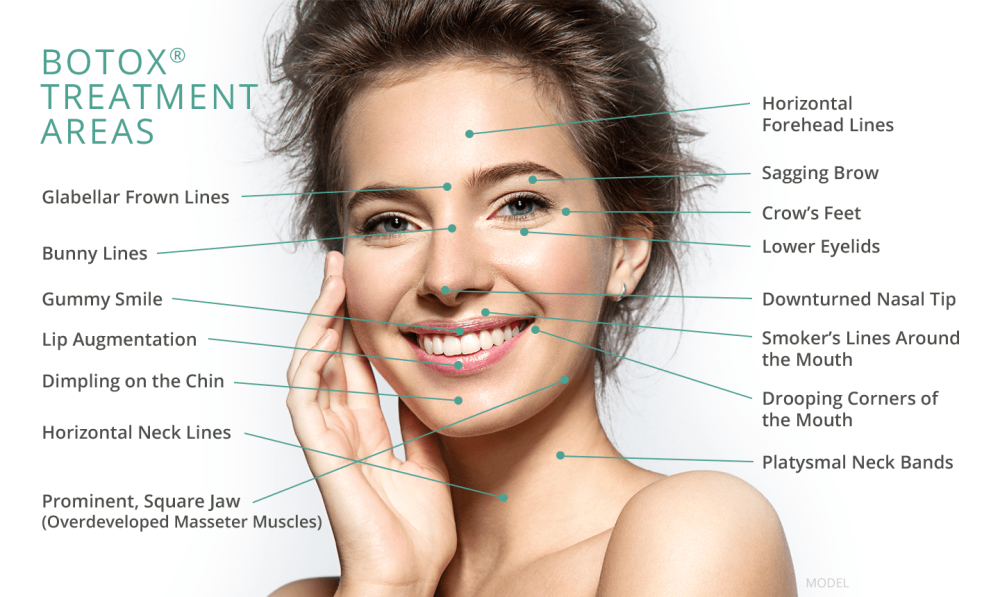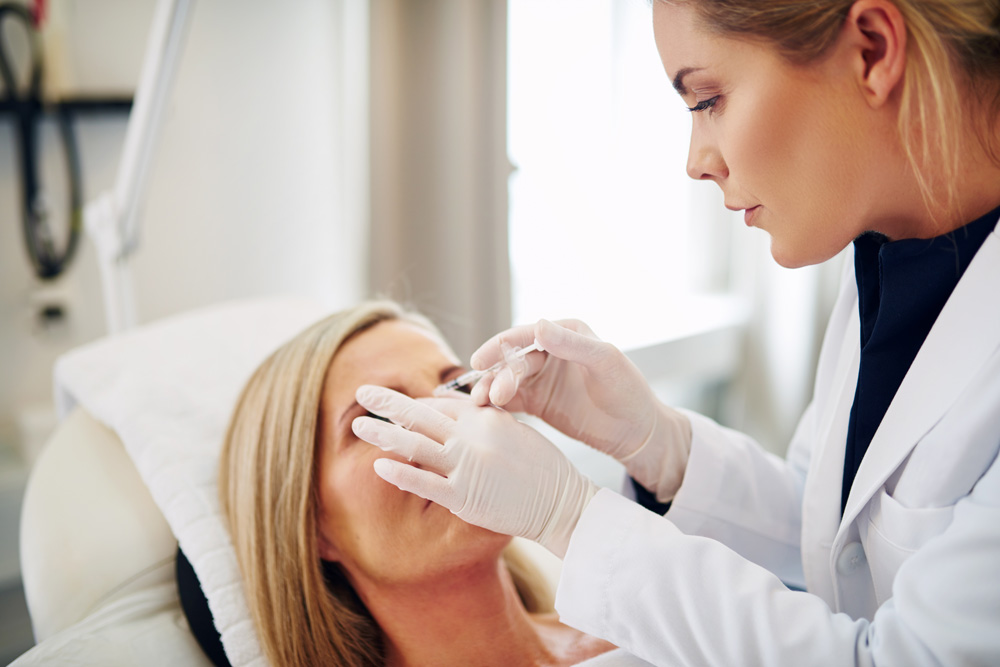Common Areas of Treatment
- Forehead
- Frown lines
- Crows feet
- Upper 'lip flip'
- Smokers lines / drooping mouth
- Nefertiti neck lift
- Gummy smile
- Migraine treatment
- Excessive sweating (Hyperhidrosis) treatment in armpits and hands
For those aged 40years and below the goal is to address wrinkles and preventing permanent lines settling in
For those aged 40years and above the goal is to try to soften existing lines and prevent them from worsening



